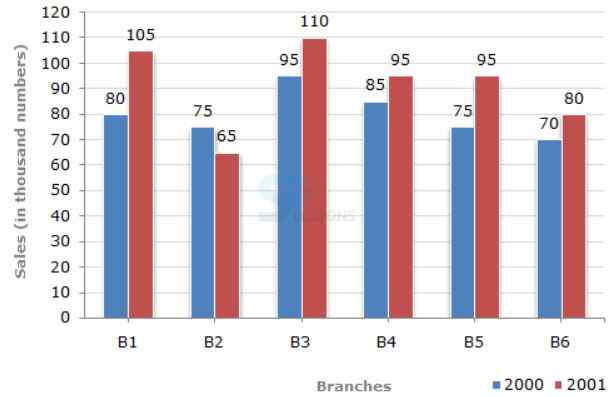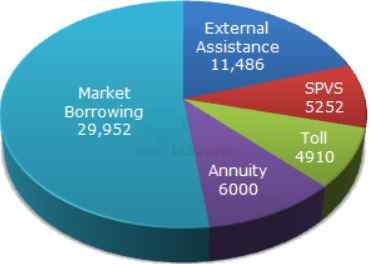 Introduction
Introduction
Data Interpretation is the ability to analyze, interpret and visualize the provided data to arrive at conclusions and to make inferences. Data Interpretation questions in the competitive exams is a test of analytical abilities. In the competitive exams, the Data Interpretation questions are grouped together and refer to the same table, graph or other data/visual presentation. The test takers are required to interpret or analyze the given data to answer the questions. In India, competitive exams related to employment in Banking, SSC, Insurance etc..have the Data Interpretation type of questions.
The article IBPS PO Data Analysis & Interpretation Quiz 2 provides Important Data Analysis & Interpretation Multiple choice questions useful to the candidates preparing IBPS PO Mains, Insurance and Bank Exams 2019.
 Quiz
Quiz
Directions (1-5): Study the following information carefully and answer the questions given below:
1. What is the different between the number of students passed with 30 as cut-off marks in Chemistry and those passed with 30 as cut-off marks in aggregate?
Classification of 100 Students Based on the Marks Obtained by them in Physics and Chemistry in an Examination.
| Subject | Marks out of 50 | ||||
|---|---|---|---|---|---|
| 40 and above | 30 and above | 20 and above | 10 and above | 0 and above | |
| Physics | 9 | 32 | 80 | 92 | 100 |
| Chemistry | 4 | 21 | 66 | 81 | 100 |
| Average (Aggregate) | 7 | 27 | 73 | 87 | 100 |
- A. 3
B. 4
C. 5
D. 6
E. 10
- A. 27
B. 32
C. 34
D. 41
E. 45
- A. 21%
B. 27%
C. 29%
D. 31%
E. 45%
- A. 13
B. 19
C. 20
D. 27
E. 25
- A. 40-45
B. 30-40
C. 20-30
D. Below 20
E. Below 30
Directions (1 to 5): The bar graph given below shows the sales of books (in thousand number) from six branches of a publishing company during two consecutive years 2000 and 2001.
Sales of Books (in thousand numbers) from Six Branches - B1, B2, B3, B4, B5 and B6 of a publishing Company in 2000 and 2001.
1. What is the ratio of the total sales of branch B2 for both years to the total sales of branch B4 for both years?- A. 2:3
B. 3:5
C. 4:5
D. 7:9
E. 8:9
- A. 68.54%
B. 71.11%
C. 73.17%
D. 75.55%
E. 78.55%
- A. 75%
B. 77.5%
C. 82.5%
D. 87.5%
E. 89.5%
- A. 73
B. 80
C. 83
D. 88
E. 90
- A. 250
B. 310
C. 435
D. 560
E. 570
Directions (1 to 5): The following pie-chart shows the sources of funds to be collected by the National Highways Authority of India (NHAI) for its Phase II projects. Study the pie-chart and answers the question that follow.
Sources of funds to be arranged by NHAI for Phase II projects (in crores Rs.)
1. Near about 20% of the funds are to be arranged through:- A. SPVS
B. External Assistance
C. Annuity
D. Market Borrowing
E. None of these
- A. 4.5%
B. 7.5%
C. 6%
D. 8%
E. None of these
- A. Rs. 6213 crores
B. Rs. 5827 crores
C. Rs. 5401 crores
D. Rs. 5316 crores
E. None of these
- A. 52°
B. 137.8°
C. 187.2°
D. 192.4°
E. None of these
- A. 2 : 9
B. 1 : 6
C. 3 : 11
D. 2 : 5
E. None of these







